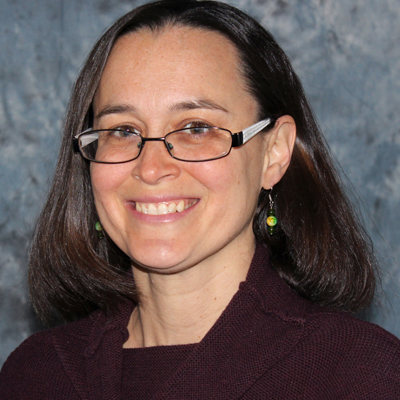Opening a new window on the universe and building a diverse pipeline for a new field of astrophysics
In 1915, Einstein published the theory of general relativity, the most elegant and complete description of gravity, space and time ever constructed. This theory has been verified in a variety of settings both on earth and in space. One of Einstein's most fundamental predictions is the existence of invisible ripples in space-time called gravitational waves. While there is good evidence for their existence, they still have not been directly detected. Nearly 100 years after Einstein's work, Dr. Maura McLaughlin, of West Virginia University, and colleagues are on the brink of detection of these waves through monitoring of exotic stars called pulsars with the largest radio telescopes in the world. Pulsars emit extremely regular pulses and accurate timing of these celestial clocks allows scientists to detect tiny perturbations. These perturbations allow scientists to search for binary companions or planets, measure stellar masses, and test general relativity.
Dr. McLaughlin's use of radio pulsars is much more cost-effective than costly ground-based gravitational wave detectors like LIGO, and leads to many discoveries that come "for free" along with the gravitational wave search. In addition, radio pulsar timing has impressive ramifications for radio communications, accurate timekeeping on Earth, and could be used for interstellar navigation. Finally, she is committed to involving students at all levels in her work through a program called the Pulsar Search Collaboratory that has involved over 2000 high-school students from 19 states in pulsar searching using the Green Bank Telescope in West Virginia. These students are making real contributions to the sensitivity of the experiment to gravitational waves, as it increases with the number of pulsars in the array.
Current projects include:
-
Detecting Gravitational Waves: Dr. McLaughlin and her colleagues in the NANOGrav collaboration times a number of pulsars in a "pulsar timing array" to search for correlated changes due to gravitational waves. The main sources Dr. McLaughlin expects to detect are supermassive black hole binary systems. This will allow her to directly measure properties of black holes for the first time and will also inform our understanding of galaxy evolution and cosmology. Dr. McLaughlin may also be able to constrain exotic phenomena such as cosmic strings or early universe inflation through this experiment!
- Exotic Pulsar Physics: The pulsar searches constantly reveal individually interesting pulsars, leading to breakthroughs in many branches of physics. Dr. McLaughlin and her team are therefore weighing stars more accurately than possible through any other method. This is leading to new models for the composition and structure of these exotic stars, denser than anything we can create in laboratories on earth. They are also performing many different tests of general relativity on exotic binary pulsar systems.
-
Pulsar Search Collaboratory: Over 2000 students have been involved in pulsar research through the Pulsar Search Collaboratory program. Students in this program search for pulsars to add to the pulsar timing array. Most of the students who've participated in this program have stayed in STEM fields. In addition, half of the students are female and many are from rural households. Therefore, the program is playing a large role in diversifying the STEM pipeline. Dr. McLaughlin and colleagues hope to expand this program by establishing PSC "hubs" throughout the country in order to involve more students in this research. Dr. McLaughlin is currently co-producing a documentary called "Little Green Men" about the program.
-
The Arecibo Observatory and the Green Bank Telescope: Dr. McLaughlin and her team perform their observations with the Arecibo Observatory (in Puerto Rico) and the Green Bank Telescope (in West Virginia). These are the largest and second largest telescopes in the world, and the most sensitive telescopes for this experiment. Unfortunately, both of these telescopes are under threat of closure by the National Science Foundation. Dr. McLaughlin hopes to raise funds for the telescopes both to support her own research, to give students and young scientists the opportunity to work with these unique instruments, and to support the communities of dedicated workers at these facilities.
Bio
Dr. McLaughlin has always been fascinated by astronomy. As a child, she loved to read and gravitated towards science fiction and popular science novels. When she read A Brief History of Time, by Stephen Hawking in high school, she was inspired by physics, cosmology, and relativity. While an undergraduate at Penn State, she worked with Professor Alex Wolszczan who had just made the discovery of the first planets outside of our solar system. These planets were found orbiting around an exotic star called a pulsar. She travelled to the Arecibo Observatory in Puerto Rico on a summer research project, and was amazed at the technologies used to study these exotic stars, and the range of applications of this research. Ever since, she has dedicated her professional career to using pulsars as a tool to study exotic astrophysics. In her free time, Dr. McLaughlin enjoys playing the oboe and spending time outdoors. She frequents her cabin in Pocohontas County near the Green Bank Telescope, and trys to keep up with her three boys on mountain bikes, ice skates, skis, and more!
Dr. McLaughlin's main research interests involve studying neutron stars and their environments through radio, X-ray and gamma-ray observations. Neutron stars are amazing physical laboratories for general relativity, studies of the interstellar medium, high-energy particle and plasma physics, and studies of stellar evolution. A significant research aim, through her work with the NANOGrav collaboration, is to use neutron stars to detect gravitational waves through timing an array of ultra-precise millisecond pulsars. She is PI on an NSF PIRE(Partnerships for International Research and Education) award for the International Pulsar Timing Array for gravitational wave detection. Her work with the Pulsar Search Collaboratory involves West Virginia high-school students in her research. She has been awarded an Alfred P. Sloan Fellowship and a Cottrell Scholar Award from the Research Corporation for her work.
Website: astro.wvu.edu/people/maura


